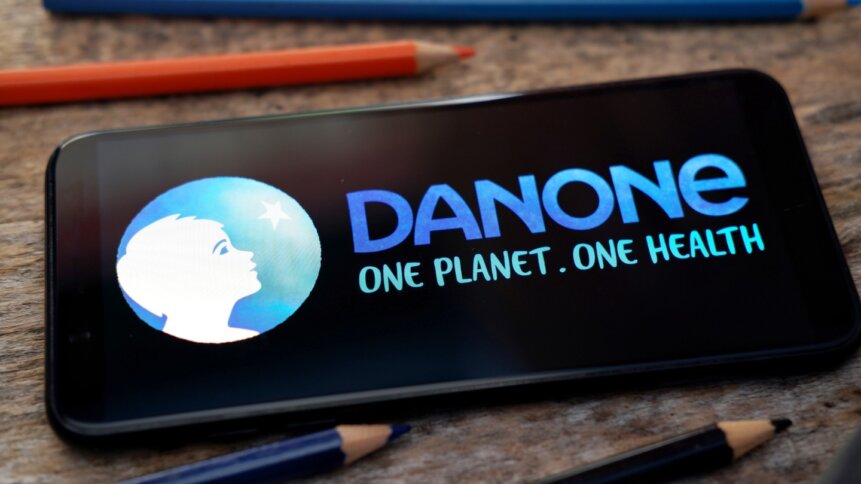Building a modern research project platform for business efficiency

The bigger you are as a company, the more you are likely to have going on. By the time you’re a multi-national organization with a brand portfolio, undertaking multiple research projects around the world simultaneously, you can find yourself with not only a major research management challenge, but a significant issue of delivering data and feedback to everyone who needs it across your research space. To deal with that, you need a modern research project platform.
Danone is one of those multinational organizations with a spectacularly recognizable brand portfolio. It recently implemented a modern research project platform to tighten up and improve its delivery of research projects across its portfolio, in particular focusing on effectively disseminating information and process management, using Stravito – a specialist company in the field, especially dealing with such multi-brand companies.
We sat down with Joanna Dumont, Danone’s VP of Strategy & Insights, and Thor Philogéne, Stravito’s CEO, to understand the process of maximizing insight and project control across an enormous information-surface.
THQ:
Joanna, we understand that usually, companies like Stravito help to deliver additional insight across companies. What was lacking in the insight that Danone had?
Big research.
JD:
We run lots of different pieces of research around the world, from Argentina, to, I want to say Alaska, maybe that’s a bit of an exaggeration, but you get the idea. Lots of research going on, all over the world, all the time. One of the biggest challenges we have is sharing knowledge from one team to another, so we have some transparency.
We’ve actually been working with Stravito for the last four years on the knowledge management part of that, having as much of our learnings as we can accessible to as many people in the organization as possible. If you can do that, you can be more efficient, you don’t have to repeat learning, you can leverage stuff over and over again.
As a result of that, we’ve built a really massive knowledge bank that’s global, searchable, and usable wherever you are. Our platform’s called AVA – ask, view, and act. So it’s really meaningful in terms of transforming the decision-making in the organization, that we can act upon the learnings that we have.
That’s the background to our situation, so it’s not that we were necessarily missing things in that sense, but what we were looking for was better ways, more efficient ways to access what we have. We’ve been doing that now for years, and we’re continuing to see that go from strength to strength. Every year we get more and more users across the company, more and more teams using the platform for different applications.
What we were missing was a function that allowed us to manage projects right from the inception of the project, when you decide “I’m going to do this piece of research.” Sounds easy, but there are a lot of steps involved – briefing the agency, deciding the agency, figuring out how to actually do the research you’ve decided on.
I’ve worked in other companies before, and I’ve worked with other tools before, but what we were trying to do was leapfrog all that. We wanted to take the best of what we know about research management and take it into the 21st century and bring it to life in a way that made sense for us now, so it’s not just a tool that checks that projects are being done the right way, but actually helps the teams do the job better and more efficiently than they were able to in the past. We wanted a modern research project platform that actually delivered.
So it’s not that we were missing knowledge, it was more that we were missing the tools or the mechanism for us to conduct the learnings that we had in a more efficient manner.
THQ:
That makes some sense. Was there an external goal that you were aiming for?
The challenge of automatic adoption.
JD:
What we were particularly looking for with this was a modern research project platform that would deliver automatic adoption. Something that didn’t require us to hit people over the head if they hadn’t worked with the tool, but something that actually helped them.
Most of the platforms that I’ve worked with before were more about punishing you if you hadn’t gone through the steps, so it was like an extra piece of work. What we’re trying to build here, and what we’re getting really positive feedback on from teams, is something that actually makes my job easier. A modern research project platform that genuinely makes the process more efficient.
So yes, we were aiming for natural pull from the users. To me, that’s the best way when we think about technology – it should be an assistant, not a chore, not another step that we all have to go through that helps our compliance people make sure we’ve all done the right thing.
THQ:
And that’s working? You’ve had good feedback from the teams, but are there other benefits that are coming from this development?
JD:
Yes. Beyond the feedback, for me, it’s a shift in the way that we use technology. As I said, technology should be making our lives easier, letting us do our jobs – and our research – better. Because of the way that we’ve worked on building this platform with Stravito, we know that’s what we’re getting. They’ve listened to us, on both the small stuff and the big stuff, and they’ve built us something that we knew from the get-go would work for us.
As an example, some of the features that we now have built into the platform, allowing the teams to collaborate on a brief and be able to provide feedback directly into the brief, without having to go through a whole other process, make that brief the best that it can be.
Let’s chat.
When I see what we’re able to do in the platform now, versus what we could do when I first started working on research management tools, you couldn’t even have imagined being able to do these things back then. We’ve listened to each other on what’s possible, technically, but also on what’s right for the business.
We’ve added in-person chat, for instance, and that came from the need to be able to collaborate on a brief so that we don’t have to have a parallel stream running in our email system. And one of the biggest problems that the teams actually have when they’re running a project is knowing which is the final brief.
THQ:
All writers everywhere know that struggle. The iteration maze.
JD:
It sounds simple, doesn’t it? But often, when you’re running projects like that, everything is an iterative process. And so often, somebody has to go back through the emails and figure out what was the last brief that we actually agreed to.
Whereas here, there’s no debate, it’s gone through the process, and the system keeps track of that. And so we can automatically see what the last request was, and we can talk about it in the platform, rather than, again, trying to have two parallel streams going. The team really listened to us and how we were working to be able to figure out what was the best technical solution to address those needs.
In Part 2 of this article, we’ll find out more about the new research platform at Danone, and the challenges of building such a platform across a complex research environment from Stravito.










